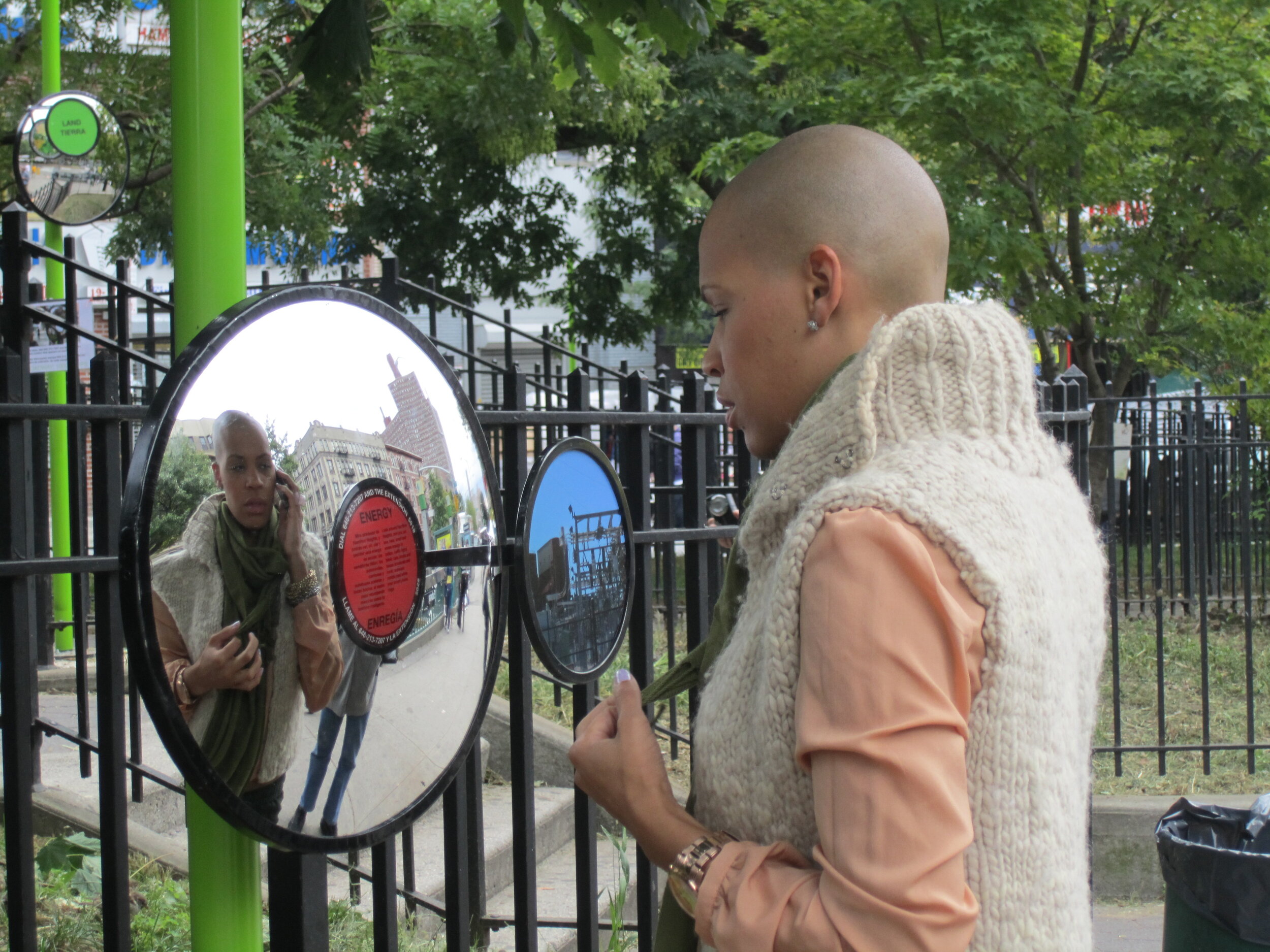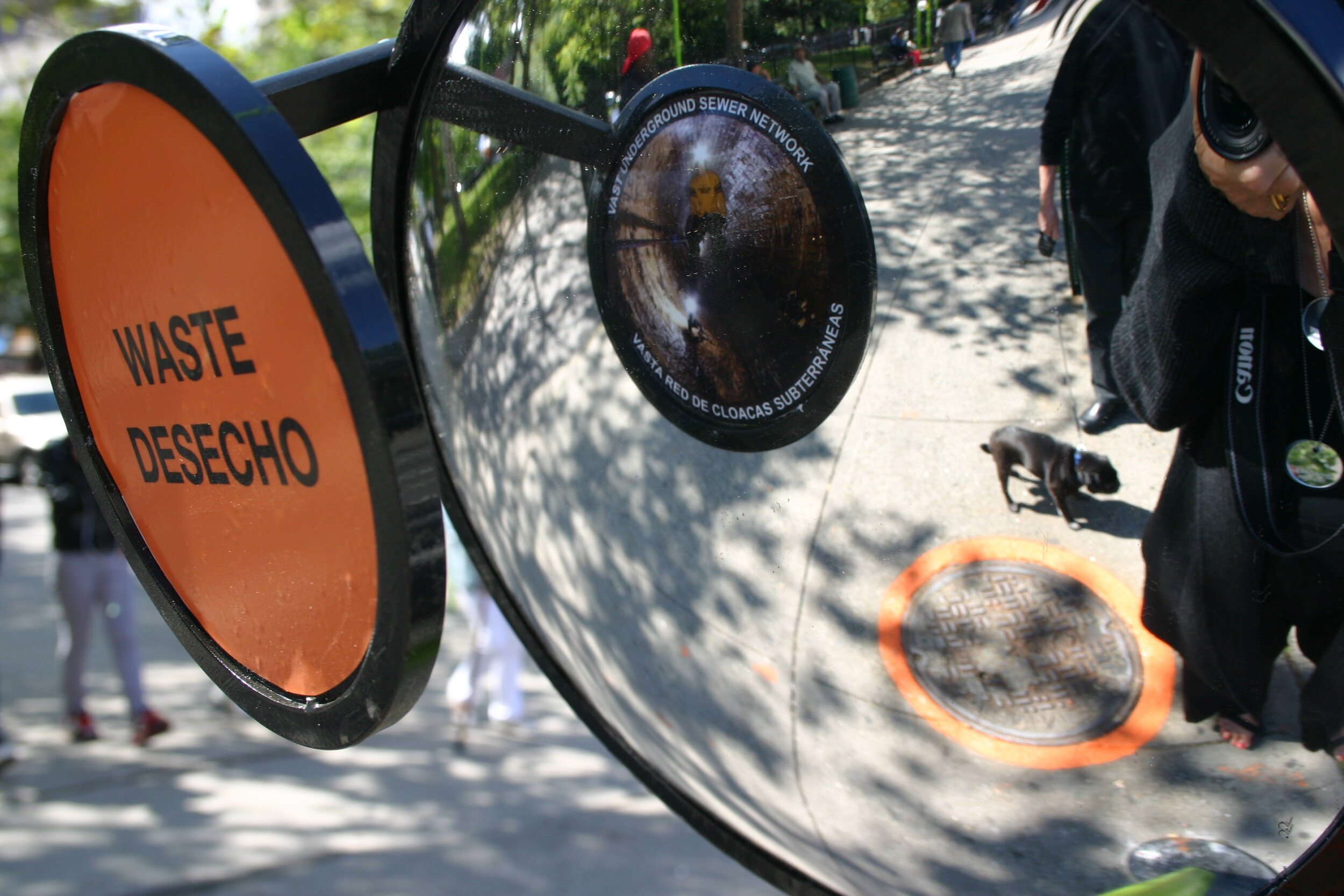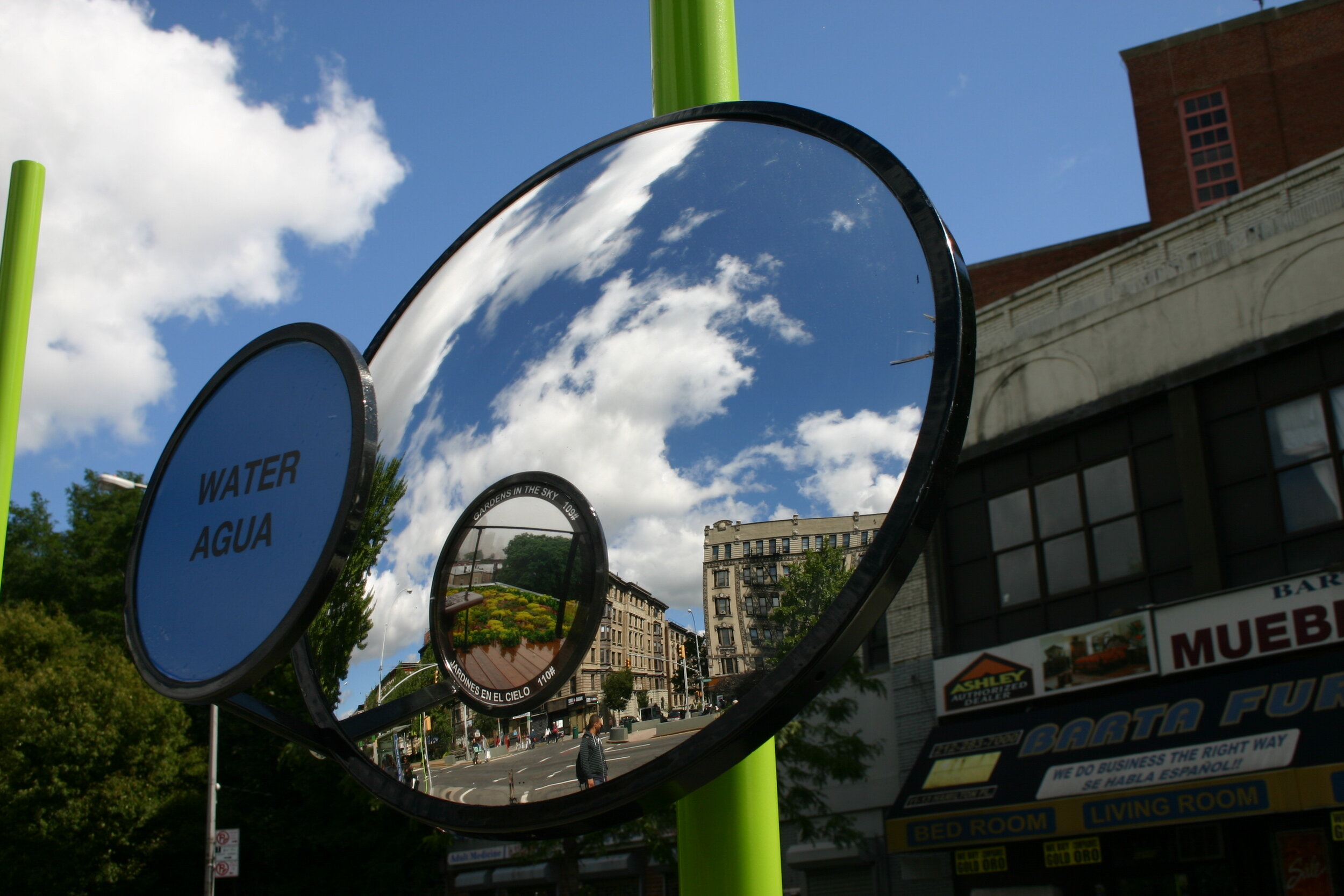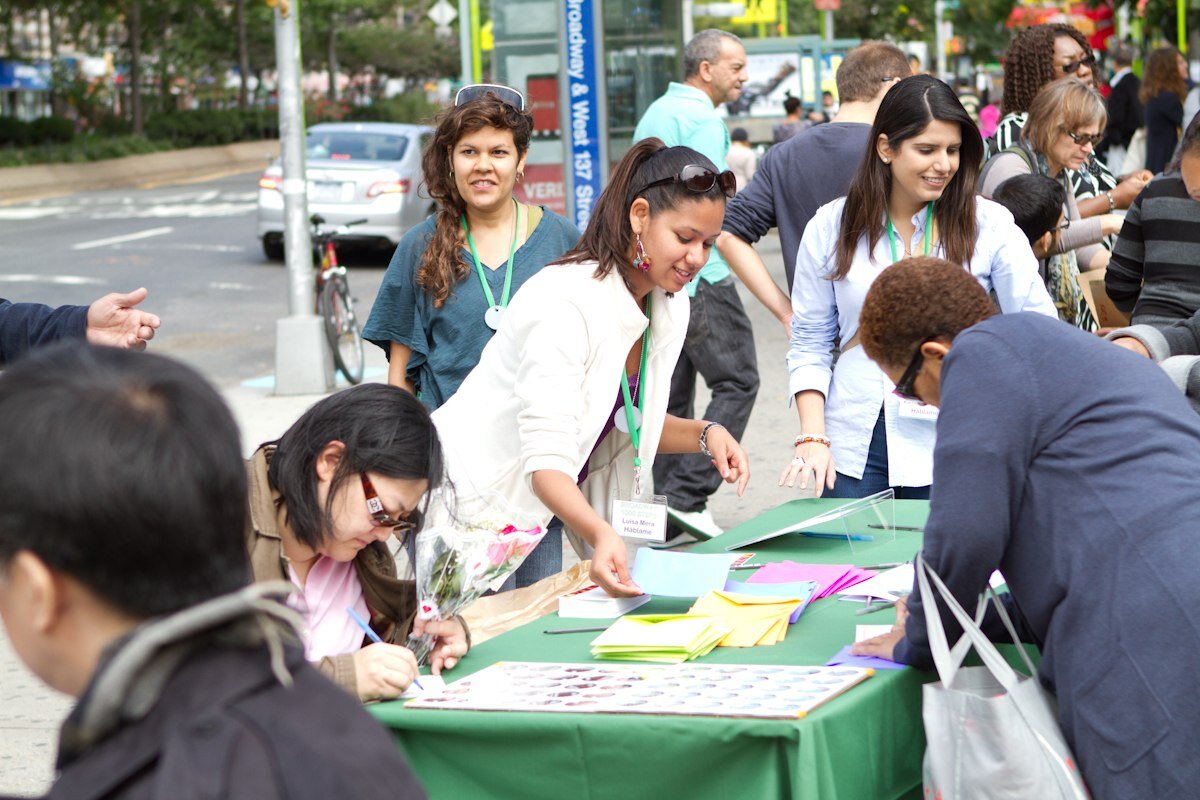BROADWAY: 1000 Steps
New York, New York
BROADWAY: 1000 Steps (B/CaLL) is a precedent project for CALL//City as Living Laboratory. Mary Miss initiated the project in 2013 to lay the groundwork for future CALL projects — projects that bring together artists, scientists, policy makers, and others in order to nurture collaboration and add a social and experiential dimension to research and planning.
When fully implemented, BROADWAY: 1000 Steps’ goal is to activate up to twenty “hubs” dispersed along the length of Broadway — New York City’s longest street — re-envisioning the street as a “Green Corridor.” Street-level installations investigate the numerous decisions, both small- and large-scale, that have and will shape the ecosystem. In aggregate, revealing the vast network of systems vital to a sustainable city and clearly articulate the city’s sustainability goals.
The cumulative power of individual actions is the driving principle of BROADWAY: 1000 Steps and the inspiration for its title “1000 Steps.” Its core message is that nature is everywhere and always dynamic, even in cities, and that individuals have a profound impact on it.
BROADWAY: 1000 Steps seeded CALL’s current New York City initiatives Rescuing Tibbetts Brook and the Chinatown Projects, and CALL continues to use the Broadway corridor as an organizing principle.
Broadway: 1000 Steps - Pilot Installation at 137th Street
In 2013, a temporary pilot hub was installed at Broadway and 137th street to showcase Mary Miss’s interactive toolkit:
Brightly colored lime-green posts and fences that call attention to the hub as pedestrians approach, defining a force field within which curiosity will be aroused and awareness expanded.
Convex mirrors with text that directs attention to a particular piece of street hardware, engaging the viewer by reflecting their image in the context of the decoded built environment.
Pavement markings used to highlight features such as street hardware or plantings with color-coded outlines or multi-lingual text.
Walkable maps and diagrams that convey information about the surrounding neighborhood, not only geographic but also distances to sources of drinking water and electricity or distances for disposing of waste.
Audio recordings of experts that describe a particular aspect of the subject or site and link participants to further inquiry via mobile phone or project website.
John Fraser, Ph.D. AIA, formerly of the Institute for Learning Innovation (ILI) and currently President and CEO of the New Knowledge Organization, was instrumental in developing the approach and identifying the topics for that hub: air, water, waste, life, energy, and food. Fraser’s research data were collected through on-line surveys, facilitated forums, and on-the-street interviews in English and Spanish.
The community partners at 137th Street included the Montefiore Park Neighborhood Association, Community Board Nine, and the City College Department of Urban Design.
The 137th street hub was largely funded by a National Science Foundation Early-concept Grant for Exploratory Research (EAGER) award for Informal Science Education (ISE), which supports exploratory work on potentially transformative research ideas or approaches.
The installation was implemented in concert with the Institute for Urban Design (IFUD) 2010 Urban Design Week. Its content and public programs were developed with the assistance of faculty and students at the City College Academy for Professional Preparation (CCAPP) Division of Science, the Montefiore Park Neighborhood Association, and Community Board 9.






